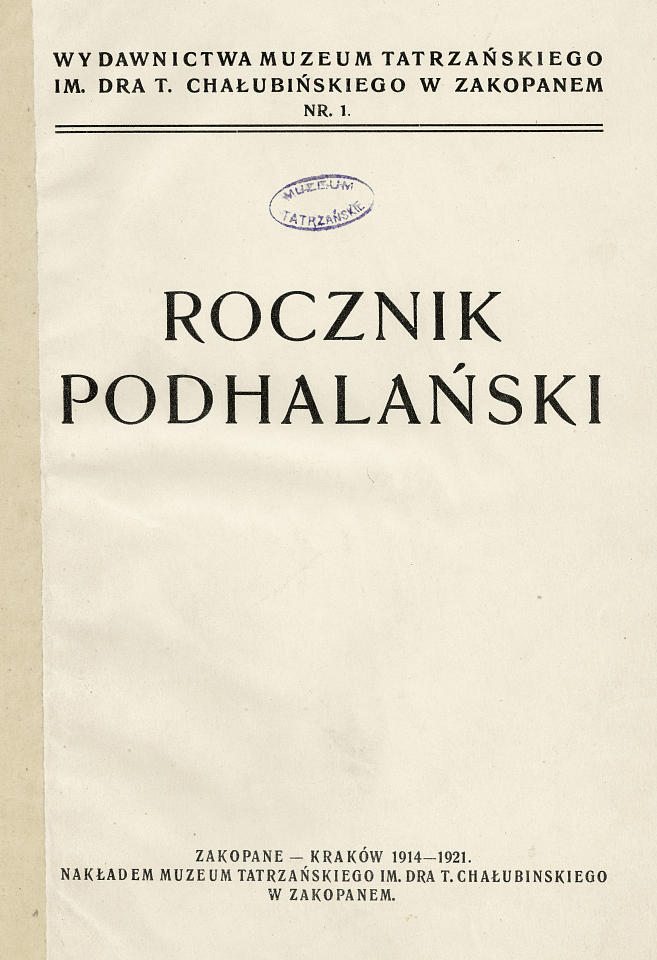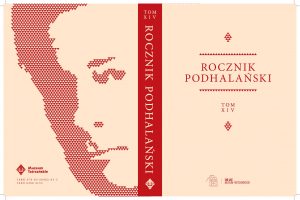About the Podhale Yearbook
The Podhale Yearbook is a scholarly periodical that has been published since 1921 by the Tatra Museum in Zakopane. As we can read in the second issue of the Yearbook (1979), the idea of publishing the first issue was undertaken a few years before the outbreak of the First World War by the outstanding researcher and ethnographer, Bronisław Piłsudski. Until the outbreak of the war, a lot of valuable ethnographic material was collected, most of which was to be included in the contents of the journal. As the outbreak of the First World War prevented its publication, the first issue was not published until 1921, mainly thanks to the efforts of the ethnographer and linguist Juliusz Zborowski, who later became the director of the Tatra Museum for many years. The dream of the first publishers was to publish the periodical annually, but unfortunately this intention was unsuccessful; the second issue of the journal appeared some 58 years later, in 1979.
The original aim of the publishing house was to publish scholarly research dealing with the history of the spiritual and material culture of the entire Polish Tatra region, i.e. the Podhale, Spisz, Orawa and Pieniny regions. As we can read in the second issue of the Podhale Yearbook, the periodical was intended to initiate, encourage and popularize this research. With time and with subsequent issues, the scope of the journal expanded to include issues related to architecture and natural history.
Currently, the editorial board aims to publish a periodical specializing in the cultural and natural heritage of the Carpathians, with particular emphasis on the Tatra Mountains and the Tatra region. We want to disseminate knowledge in this area through the results of academic research, the publication of reviews and reports from academic conferences and the research activities of organizations and associations from the Carpathian area.
Dr Jan Cichocki
Dr hab. Dorota Folga-Januszewska
Prof. dr hab. Andrzej Gaździcki
Dr Ewa Klekot
Dr Anna Król
Prof. dr hab. Małgorzata Omilanowska
Dr hab. Ewa Roszkowska
Dr hab. Jerzy M. Roszkowski
Dr Andrzej Siwek
Dr hab. Katarzyna Smyk
Dr hab. Andrzej Szczerski
Prof. dr hab. Jan Święch
Prof. dr hab. Zdzisława Tołłoczko
Dr Stanisława Trebunia-Staszel
Prof. dr hab. Ludovít Kocian
The periodical has the ISSN number 0208-4155.
Please send your articles to the editorial office’s email address: rocznikpodhalanski@muzeumtatrzanskie.pl
The submitted articles should be properly edited in Polish or English in accordance with the following guidelines and should contain the following information in their content:
Personal details of the author / authors (affiliation) – correspondence address for ALL authors: name, surname, correspondence address, home address or address of the institution where they are employed, telephone number and e-mail. Please also include a short biography (3-4 sentences long) of the author / authors and ORCID (Open Researcher and Contributor ID) numbers.
Title – As short as possible, both in Polish and in English. Written with small caps.
Abstract – Up to 100 words long, in Polish and English. The abstract should briefly inform about the content of the work without having to refer to the main text.
Key words – About five of the most important words in Polish regarding the article. These words should not be included in the title of the article. Key words should also be translated into English.
Illustrations – in a separate file, black and white or colour saved in * .tiff or * .jpg formats. Captions to illustrations should be written in Polish and English. Illustrations should be numbered sequentially and referred to in the text using the abbreviation “fig.”. In the case of using borrowed graphics, please provide the exact source with the citation rules adopted in the periodical, and in the case of archival sources – the reference number.
Photos – with a minimum size of 300 dpi (12.5 x 18) or 1500 x 2000 pixels, should be sent in the form of separate jpg files described with the abbreviation “photo”, with the author of the photo. Captions and numbering in the text, as in the case of illustrations. In the case of archival photos, the description should include the number, name of the photo, author’s name, date of image. For example: From the Tatra Museum collection AF_80_II_Tatry_Photo by Henryk Jost_1939).
Tables – Formatted according to the standard requirements of academic papers. We do not accept tables that do not fit on the page of the periodical (maximum width – 12.5 cm). Table captions – as in the case of figures. Tables should be numbered sequentially and referred to in the text as “Table”.
Names of species (in the case of natural history articles) – both parts of the species name in Latin are written in italics, and when used for the first time, the name of the person who described the species should be given in brackets. For example: Nyctalus noctula (Schreber, 1774).
Dates – dates are to be written according to the following formula: days in Arabic numerals followed by a space and then the month in Roman numerals, e.g. 12 VII; the full date is to be written as follows: 20 VI 1998.
For Chapters and the body of the text – we use the following chapter titles: Introduction, Research area, Material and methods, Results, Discussion, Conclusions. It is also allowed to use different nomenclature for sub-chapters or, in justified cases, their absence. The text should be written in Times New Roman size 12, with 1.5 line spacing.
Bibliographic data should be saved in the American Psychological Association 6th edition (APA) format. We encourage you to download the file with the citation pattern for the Zotero programme. In the case of sources written in alphabets other than Latin, e.g. Russian, all descriptions should be transliterated.
In the case of a direct quote, the quoted fragment should be clearly marked with quotation marks, and in parentheses, plus the name and year and the page from which the record comes from; for example:
However, it is important that they have the character of “intense, long-lasting contacts with members of the surveyed communities” (Kaczmarek, 2016, p. 126).
Quoting journal articles.
In the text
Research paper, multiple authors (Gottwald, Appelhans, Adorf, Hillen, & Nauss, 2017)
Research paper, two authors (Todd & Waters, 2017)
Book with one author (Gąsienica-Byrcyn, 2012)
Bibliography model (alphabetical order).
Gąsienica-Byrcyn, W. (2012). Świstak tatrzański Marmota marmota latirostris. Zakopane: Wydawnictwa Tatrzańskiego Parku Narodowego.
Gąsienica-Byrcyn, W. (2012). Tatra marmot Marmota marmota latirostris. Zakopane: Tatra National Park Publishing House.
Gottwald, J., Appelhans, T., Adorf, F., Hillen, J., & Nauss, T. (2017). High-Resolution MaxEnt Modeling of Habitat Suitability for Maternity Colonies of the Barbastelle Bat Barbastella barbastellus (Schreber, 1774) in Rhineland-Palatinate, Germany. Acta Chiropterologica, 19 (2), 389–398. https://doi.org/10.3161/15081109ACC2017.19.2.015
Todd, V. L. G., & Waters, D. A. (2017). Small Scale Habitat Preferences of Myotis daubentonii, Pipistrellus pipistrellus, and Potential Aerial Prey in an Upland River Valley. Acta Chiropterologica, 19 (2), 255–272. https://doi.org/10.3161/15081109ACC2017.19.2.004
In the absence of an author of a publication, which may happen when quoting daily newspapers, the following should be used:
Wyścig Tatrzański (1928). Szofer Polski, 17, 12-13.
In the case of two articles from one year and the same author or with the same title (no author), enter the next letters of the alphabet after the year of publication of the article, as in the following:
Wyścig Tatrzański (1929a). Stadjon: Ilustrowany Tygodnik Sportowy, 33, 13.
Wyścig Tatrzański (1929b). Zakopane, 18/19, 1.
The title of the journal and its number should be written in italics.
Archival materials
Bibliographic entry for a single letter
Frank, L. K. (1935, February, 4). [Letter to Robert M. Ogden]. Rockefeller Archive Center (GEB series 1.3, Box 371, Folder 3877), Tarrytown, NY.
Surname, Initial (s) (year, month in words, e.g. February, day). [Letter to …. ]. Archive name (inventory number, e.g. A / 124/2019), city
In the text, we use the wording as in the case of the publication (Frank, 1935). If the material has multiple pages (Frank, 1935, p. 2).
In the case of the archival collection of letters, we use the following:
Allport, G. W. (1930-1967). Correspondence. Gordon W. Allport Papers (HUG 4118.10), Harvard University Archives, Cambridge, MA
The text uses the notation (Allport, G, W., 1930—1967, Allport to E. G. Boring, March 1, 1939).
Other archival documents:
Surname, Initial/s (year, month in words, e.g. February, day). Title of the material [type of material, e.g. audio tape]. Collection name (inventory number). Archive name, archive location.
For example:
Smith, M. B. (1989, Feb.12). Interview with C. A. Kiesler [Audio tape]. President’s Oral History Project, American Psychological Association (A / 124/2019). APA Archives, Washington, DC.
In order to evaluate the publication sent to our editorial office, at least two independent reviewers from outside the research unit affiliated by the author are appointed. In the case of texts written in a foreign language, at least one of the reviewers is appointed from a foreign institution other than the nationality of the author of the work. The reviewer selected by the editor signs a declaration that there is no conflict of interest between the reviewer and the author. The written review contains an unambiguous conclusion regarding the conditions of the article’s approval or rejection (see the review form). The names of the reviewers of individual volumes are published once a year on the website and in the paper version in the editorial footnote of the Podhale Yearbook. If the publication is accepted for publication, the author should make corrections within two weeks and send the paper back to the editor by e-mail. It is the author’s responsibility to respond to all comments of the reviewers. After typesetting and before printing, the article is sent back to the author. On the submitted pdf file, the author has the opportunity to correct minor errors such as typos or mistakes in proper names within a week.
To ensure the scientific reliability of the published materials, the Editorial Board selects the submitted texts in accordance with the principles of “ghostwriting” and “guest authorship”. Authors of published articles and other materials are required to sign a copyright transfer agreement, which includes the principles of “ghostwriting” and “guest authorship”.
A contract is sent to the author after receiving positive reviews and the editors deciding to publish the text. This constitutes the legal basis for publication. In addition, authors are required to clearly, transparently and honestly certify that they are the sole authors of the texts sent for printing. If the article was created with the cooperation of other people, the authors are obliged to disclose their participation as authors or co-authors of the text or to mention them in the acknowledgments included in the article, stating their affiliation and contribution. It is also forbidden to publish in the periodical any texts that have already been published in other journals. The author is also obliged to provide information about the sources of financing for the publication, the contribution of scientific and research institutions, associations and other entities.
Any violations of the above principles of professional integrity and scientific ethics will be documented and disclosed by the Editorial Board, including notification of relevant entities (institutions employing authors, scientific societies, associations of scientific editors, etc.). The author submitting the manuscript is primarily responsible for any breaches of ethical standards.
List of reviewers of previous volumes:
The editorial office would like to inform you that the average time for an initial manuscript evaluation is 14 days.
The average time in which a review of the entire manuscript is carried out is estimated at 30 days.
The publication of articles in our periodical is completely free.
VOLUME I – http://mbc.malopolska.pl/dlibra/docmetadata?id=13797&from=publication
VOLUME II – http://mbc.malopolska.pl/dlibra/docmetadata?id=55967&from=publication
VOLUME III – http://mbc.malopolska.pl/dlibra/docmetadata?id=17824&from=publication
VOLUME IV – http://mbc.malopolska.pl/dlibra/docmetadata?id=17833&from=publication
VOLUME V – http://mbc.malopolska.pl/dlibra/docmetadata?id=17918&from=publication
VOLUME VI – http://mbc.malopolska.pl/dlibra/docmetadata?id=18166&from=publication
VOLUME VII – http://mbc.malopolska.pl/dlibra/docmetadata?id=18806&from=publication
VOLUME VIII –
VOLUME IX – http://mbc.malopolska.pl/dlibra/docmetadata?id=56020&from=publication
VOLUME X – http://mbc.malopolska.pl/dlibra/docmetadata?id=55968&from=publication
VOLUME XII – Tom XII „Rocznika Podhalańskiego” PDF (141 MB), Table of Contents [PDF]
VOLUME XIII – Tom XIII „Rocznika Podhalańskiego” PDF (642 MB) – Co-financed by the Minister of Culture and National Heritage from the Culture Promotion Fund.
VOLUME XIV – Tom XIV “Rocznika Podhalańskiego” PDF (5 MB) – Co-financed by the Minister of Culture and National Heritage from the Culture Promotion Fund.
Editor-in-chief: Anna Wende-Surmiak
Secretary and thematic editor: Dr. Marcin Warchałowski
Subject editor: Dr. Zbigniew Moździerz
Subject editor: Julita Dembowska
Thematic editor: Dr. Magdalena Kwiecińska
Thematic editor: Michał Murzyn
Google Scholar https://scholar.google.pl/citations?user=arRB-eEAAAAJ&hl=pl
A R I A N T A
http://www1.ciniba.edu.pl/czasopisma/czasop_full_eng.asp?id=2491
Baza EBSCO – https://www.ebscohost.com/titleLists/a9h-journals.htm
Baza Polon 2.0 – https://pbn.nauka.gov.pl/core/#/journal/view/5ebff9e3ad49b31ccec77240/current
Editorial office: The Tatra Museum, ul. Krupówki 10, 34-500 Zakopane, Malopolska, POLAND
Tel: +48 18 20 152 05 ext. 22; rocznikpodhalanski@muzeumtatrzanskie.pl




